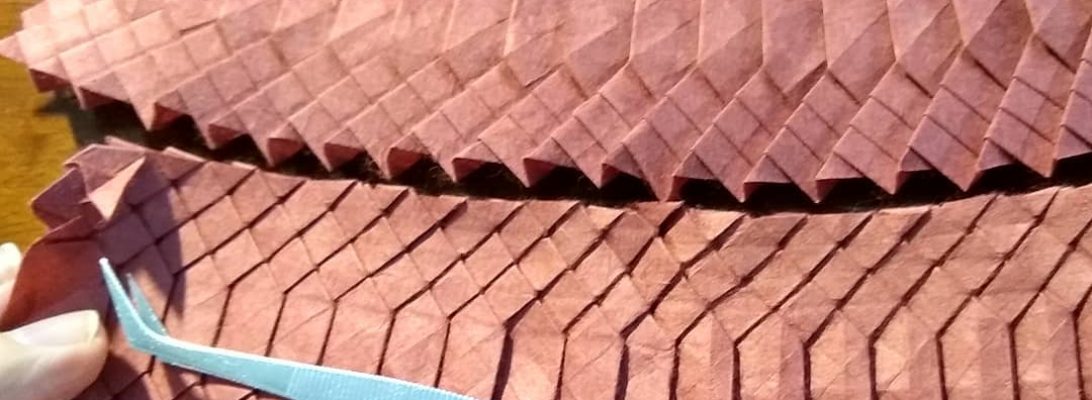I have seen amazing geometric models based on Heinz Strobl’s strip-based modular technique called “Snapology”, and thought it about time I gave it a try:
Starting simple, I divided A4 sheets lengthwise into eighths, then gridded squares on those strips. I used grey for the core, 6×1 strips were cut for each triangular core. I used red for the connectors – 4×1 strips were cut for these.
The locking mechanism is simple, and in situations where the modules are tightly packed it just sort of holds itself together, but I can see how, with small extensions to the connectors you could easily and securely lock adjacent modules more securely.
6×1 cores wrap into triangles with double layer strength, but you can generalise and do 8×1 for squares, 10×1 for pentagons etc.
You then choose your end-point geometry and build clusters of modules to make this happen. I chose an icosahedron because the mount angle for each module is pretty tight, the construction was fairly quick (I sat watching telly while splitting and scoring strips) and the resultant shape is really rigid.
I can see also that this building technique lends itself to collaborative megastructures – something I must bank for situations when I have a bored captive audience. Dimensions are important, there is some fault tolerance with this technique but there are production-line techniques you can use to improve the repeatability of the modules and ensure later construction is less pained.
Lot of potential, a good model for really damaged and painful hands (the state of my hands after marking is not good, but I need to keep them busy or they will seize up completely)

